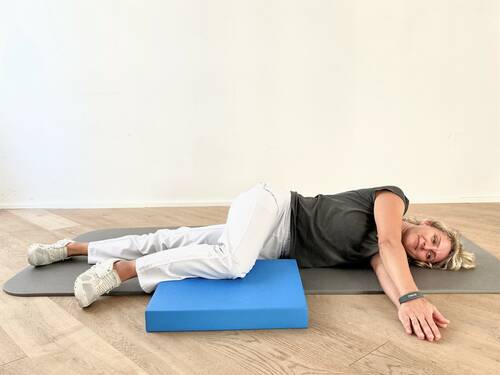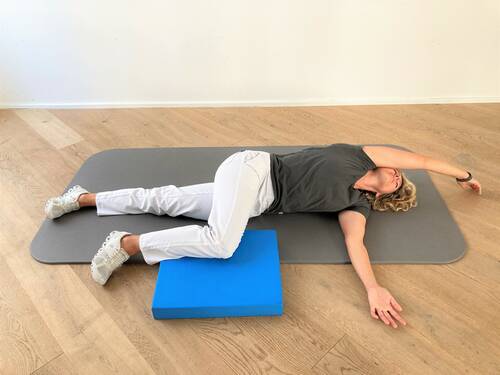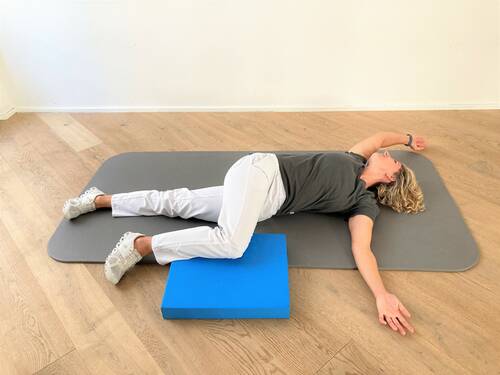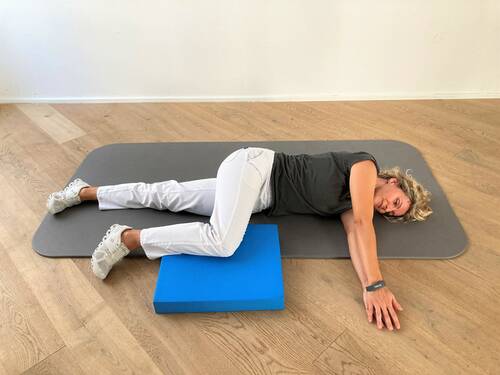If it is medically clarified that the chest pain is neither a heart problem nor orthopedic impairment, the muscular tension and blockages in the area of the vertebral bodies can be relieved with exercises. Independent exercises that widen the chest and activate muscles and joints are very suitable for this.
Tension of the diaphragm
Breathing exercises
During the breathing exercise, one lies on a mat on the floor with both legs raised. One hand is on the abdomen and the other on the chest. Two different breathing exercises can be started with this starting and ending position.
Variant I of the breathing exercise:
When inhaling, first breathe into the abdominal area. The abdominal wall always rises further. When exhaling, the abdominal wall sinks back in. The hands on the abdomen and chest can feel how the abdomen first arches and then sinks during exhalation. The chest does not move during pure abdominal breathing. The upward and downward movement can be led by the hand if necessary.
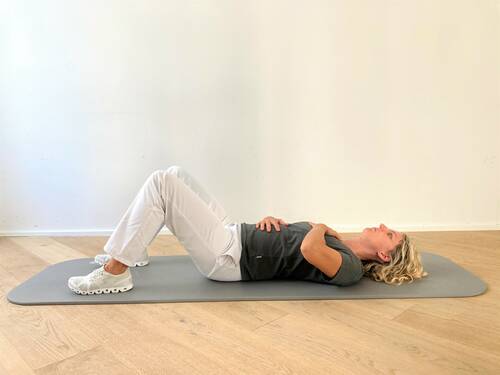
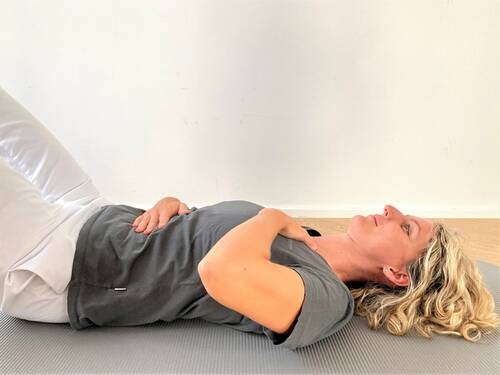
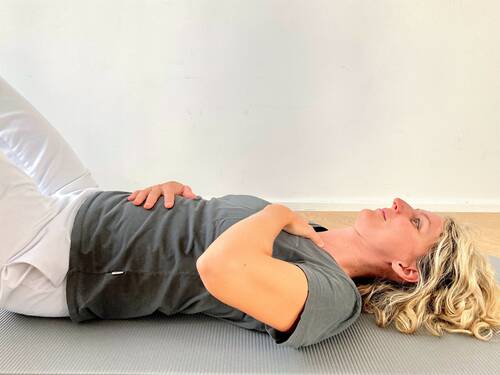
Variant II of the breathing exercise:
As with the previous inhalation, first breathe into the abdominal area. Then continue to breathe into the chest, so that it rises. The chest widens and the air flows in a wave during this exercise. When exhaling, the chest first sinks and then the abdominal wall. Here too, the hands can check the movement so that the otherwise rigid chest really moves up and down during deep breathing.
Active mobilization of the chest
In medical training, physiotherapy, or manual therapy such as osteopathy, misalignments are corrected and blockages are gently released. Regular exercises keep the chest mobile. Light exercises at home can already have a long-term effect.
Stretching at the door frame:
Standing in a lunge position in the door frame, the arms are stretched over the head. The arms form a "V-position". Fix the shoulder blades down, which feels like pulling them down. The upper body is brought forward so that the stretch is felt in the upper chest area. In the exercises, go lightly into this stretch, but do not go to the point of pain. This position is held for 60 seconds. The stretch is automatically intensified with deep breathing.
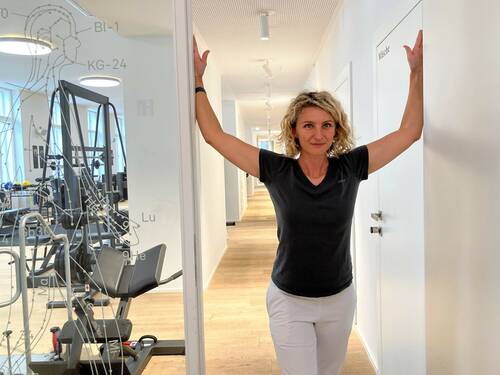
Stretching in side position:
Lying on a mat on the floor in a side position, bend the upper leg at a right angle and place it on a slightly elevated cushion. The arms are placed at chest height in full extension (90-degree angle) to the side. Guide the upper arm in a half-circle over the head on the ground. The hand always has contact with the ground. A stretch is felt. The knee should not lose contact with the cushion during the entire movement and remain almost immobile. The arm should be raised to head height at 12 o'clock for a maximum of 10 minutes to avoid overloading the shoulder joint. The exercise is first performed dynamically with 10 repetitions. Then hold the greatest stretching tension for 60 to 90 seconds. Breathe deeply and intensively to optimize the stretch.
